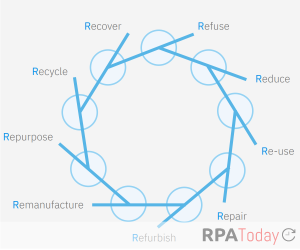
Supply chain, which most consumers don’t think about at all, came to the forefront of people’s consciousness during the pandemic as they looked for toilet paper, baby formula, cars and pizza rolls and instead found empty shelves. Supply chain woes have continued into 2022, becoming a big part of the high inflation that has dominated economic news.
Fixing those woes will increasingly rely on automation, according to a new report from IBM and Celonis. In The Resilient Digital Supply Chain, researchers found 72 percent of supply chain executives expect most of their processes and workflows to be automated in the next 3-to-5 years. While many are focused now on surviving in the short term, others, the report says, are turning to longer-term solutions growing out of the digital transformation movement.
“Some organizations are trying to get ahead of the curve with a two-pronged, data-led approach to running their supply chains,” the authors wrote. “The first prong follows a predictive model, exploiting efficiencies by using advanced analytics, data modeling, and automation to drive reliability and a frictionless experience. The second prong is more proactive, addressing high variability and unexpected disruption while embracing exponential technologies including AI, edge computing, data process mining, and even quantum.”
In addition to automation, supply chain execs also project 27 percent of their workflows will be AI enabled, increasing to 33 percent by 2030. More specifically, through 2025, 83 percent of CSCOs plan to introduce AI-enabled real-time inventory management; another 83 percent expect to introduce self-monitoring, self-correcting assets; and 81 percent are looking to AI-enabled processes and workflows for real-time demand sensing.

